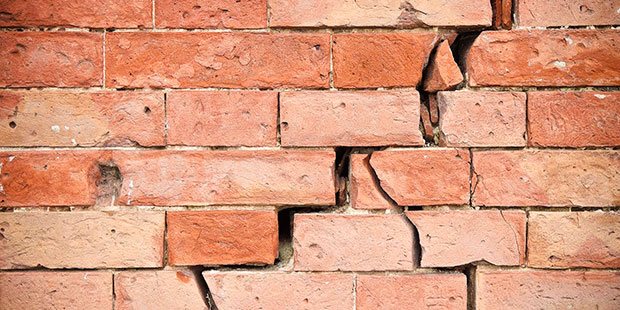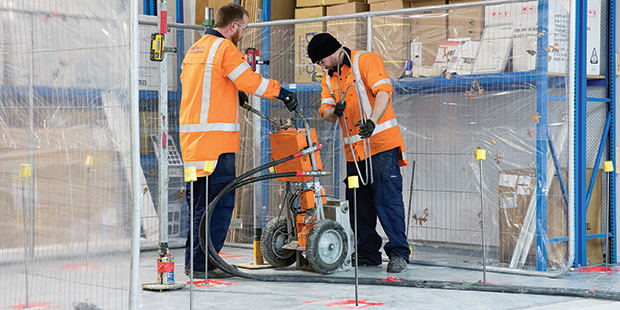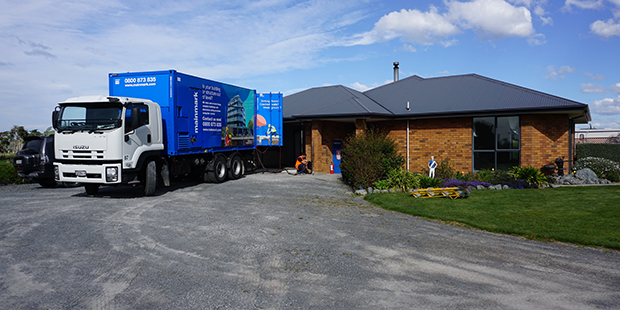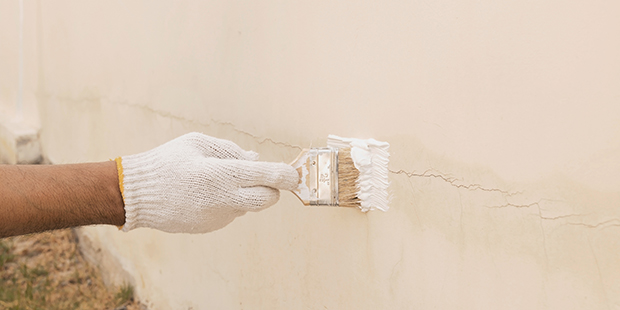Anti-earthquake soil injection
Christchurch earthquakes saw a new "injection" developed to make the ground stronger.

Sponsored by
The commercial building had tilted alarmingly, by nearly 180mm. Demolition and re-building appeared to be the only solution.
The scene: the aftermath of the Christchurch earthquakes. The problem: the owner of the building and the 10 tenants were contemplating a large, revenue-draining hole in their business operations while the building was knocked down and re-built.
That’s where Mainmark came in. Mike Baker, the company’s area manager for the lower North Island, says Mainmark’s engineers suspected there might be a better way: “The client was really worried. The building had keeled over to one side and all options on the table were demolition and re-build.
“However our geo-technical engineers thought it could be re-levelled – for a mere fraction of the cost – and once the client had his insurance pay-out, he called us in. It was win-win for him and for the insurance company.”
The office building re-levelling used Mainmark’s JOG Computer-Controlled Grouting – a low-impact, high-precision method which has the considerable advantage of allowing the business to keep trading. It works like this: Small holes are drilled so the system can inject cement-like grouting to follow the engineers’ data, basically “floating” the building back to a level state.
The computers deliver the grout to the network of injectors, a process Baker compares to keyhole surgery, far less invasive than more major remedies. “The holes we drill are so small,” he says, “that businesses can normally carry on – and that makes them very happy.”
No major excavation is required, which means little or no mess, noise or vibration. Premises don’t usually need to be vacated and neighbouring properties remain unaffected. The process is controlled to the millimetre, so there is no undue stress on any part of the building. It is a proven and cost-effective alternative to piles, jacks and other expensive, invasive foundation repairs.
Baker estimates that such building rescue projects can be achieved for 25-30 per cent of the cost of demolition and re-building.

Earthquakes resulted in substantial damage to this Category One Heritage listed building in Kaiapoi. Photo / Supplied.
Earthquakes resulted in substantial damage to this Category One Heritage listed building in Kaiapoi. Photo / Supplied.
Mainmark’s expertise in re-levelling and ground remediation came to the fore with the Christchurch earthquakes – where the ground engineering experts have now completed about 1500 earthquake-related commercial and residential projects.
Liquefaction is another issue stemming from the quakes. Soil turning to liquid after an earthquake was scary, seen all over Christchurch as the quakes hit; pictures of soil turning to slush alarmed New Zealanders, most of whom had no idea the ground they stood on could so easily become liquid.
Liquefaction occurred across the whole city but was a major issue in eastern parts and around the central business district. Some suburbs were covered in clinging, stinking mud, especially those around the Avon River and the Avon-Heathcote Estuary and some streets in Fendalton and Merivale.
Worst hit were areas of the city where buildings were located on loosely compacted, river or beach sands and sandy soils close to bodies of water, often around the Avon River and close to the estuary.
Baker says liquefaction was a factor in many of the 1500-plus Mainmark post-quake projects, some of which are still going on: “We had many, many projects affected by liquefaction causing subsidence.”
They dealt with the problem by taking part in a series of research trials in Christchurch’s Red Zone to determine whether resin injection could be used to improve ground affected by liquefaction.
“We’d already had some considerable experience with our Teretek resin solution and the company had speculated it could be used in this way,” says Baker. “But it needed scientific testing and scrutiny to see if it stood up – and it did. It showed resin injection demonstrably improves the density and stiffness of ground and increases the resistance of soils to liquefaction.”
“Off the back of this, we developed our Terefirm Resin Injection technique specifically for ground improvement and liquefaction mitigation.”
Mainmark has also used its Teretek resin injection solutions on hundreds of home and commercial building projects where subsidence has affected buildings. The 50-year product warranty underwrites its effectiveness, he says, and increases ground bearing capacity and can fill voids too.
Baker again compares the process to keyhole surgery; Mainmark technicians select a number of very small injection points, through which the Teretek expanding polyurethane resin mix is injected into the ground beneath the footings. The components mix together and expand by chemical reaction, strengthening the ground and re-levelling buildings quickly and with minimal disruption.
New Zealand’s earthquake-strengthening legislation has meant many building owners have engaged Mainmark to help – often using the JOG and Teretek technology to strengthen the ground underneath their building.
“We are seeing a lot of these projects coming on-stream now,” he says. “There has been a long period for assessment and now we are seeing owners’ actioning what needs to be done.”
Another similar Mainmark rescue was carried out on Christchurch’s Northwood Supa Centa, home to a lot of big brand retailers. Liquefaction had deformed the ground, causing differential settlement of 16mm; the building needed re-levelling and the ground improving and strengthening – and again the resin injection technique was used in conjunction with the JOG system.
“There were 3000 injection points and we worked pretty much 24 hours a day and six days a week,” says Baker. “The shopping centre continued to operate without interruption – thanks to the non-invasive and clean process.”






